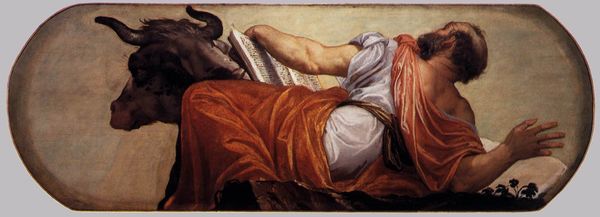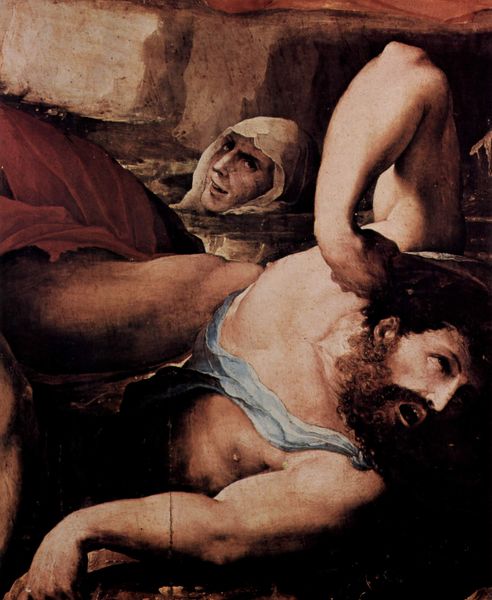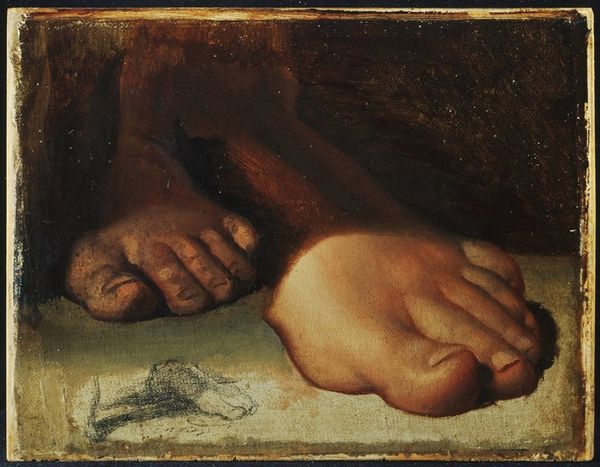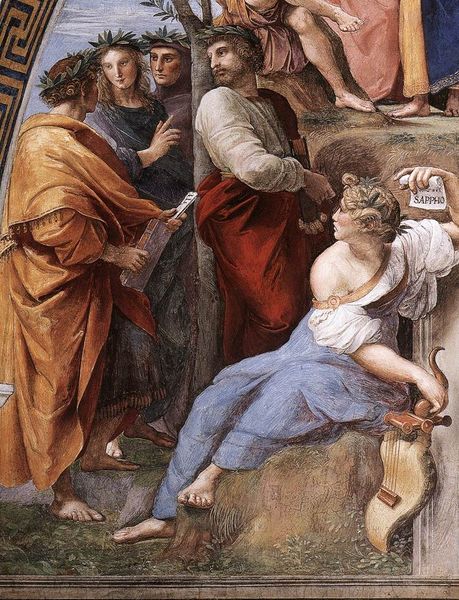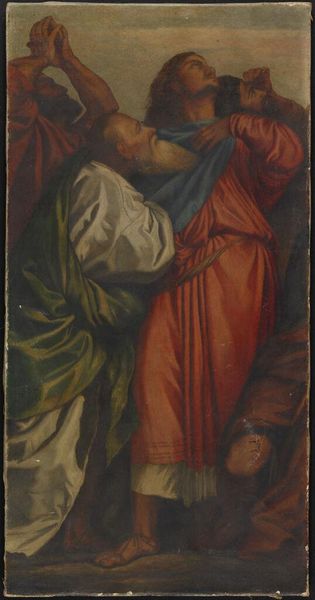
painting, oil-paint
#
painting
#
oil-paint
#
mannerism
#
figuration
#
oil painting
#
genre-painting
#
history-painting
#
italian-renaissance
Copyright: Public domain
Curator: Up next is a section taken from "The Incredulity of St. Thomas," painted around 1547 by Francesco Salviati. This detail, currently hanging in the Louvre, provides a compelling look into the Italian Renaissance through the lens of Mannerism and oil painting. What strikes you about this segment? Editor: It's intriguing, almost unsettling. The composition is cropped, tight. The color palette feels muted, creating a somber atmosphere despite the rich fabrics and potential for grandeur. Curator: Indeed. Salviati was a master of imbuing his work with psychological depth through symbols. The positioning of Thomas's foot—one shod, the other bare—carries weighty symbolic meaning. One can argue, bare feet are a symbol of penance or reverence, so to have him shod in worldly apparel, signals that his humanity precedes any acceptance of a Divine symbol, so to speak. Editor: I find it really poignant that Salviati uses such raw details—notice the texture of the fabrics, the dirt smudges on the skin. It injects this sacred scene with a dose of reality and social commentary. A great, perhaps unintended levelling here. We could all be this doubting Thomas, this is more accessible than we have traditionally assumed about depictions of the biblical kind. Curator: And notice how Salviati disrupts classical harmony; this painting diverges from the more balanced style of the earlier Renaissance. There is a sense of unease evoked, maybe mirroring the discomfort inherent to doubt itself? Thomas’s disbelief forces viewers to reconsider traditional perspectives on religious faith. Editor: Right. This isn't just a biblical tale; it reflects anxieties about knowledge, authority, and truth in a rapidly changing society, so fraught with the new political and religious developments happening in Italy at the time. It urges critical thinking and allows viewers to actively participate in a deeper reading of their values. Curator: Absolutely, Salviati urges an interpretation far beyond surface aesthetics. There are layers of context intertwined in the imagery of disbelief here. Editor: Examining "The Incredulity of St. Thomas" reminds us that artistic portrayals are never neutral; they echo broader narratives, raising relevant questions about belief and power. Curator: Yes, Salviati transforms doubt into an exploration of the self in relation to conviction.
Comments
No comments
Be the first to comment and join the conversation on the ultimate creative platform.


